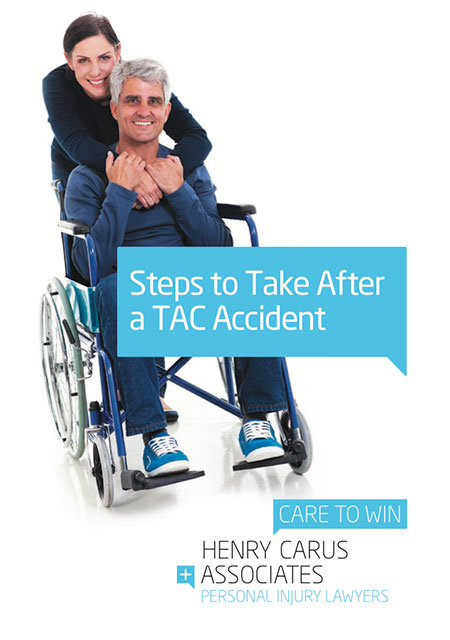
Most people have only a basic understanding of (a) what constitutes a personal injury claim and (b) what a personal injury lawyer actually does. In Victoria, the process of recovering personal injury compensation is subject to a number of complex rules and legal procedures.
There are multiple situations where a personal injury lawyer can pursue compensation on your behalf. Depending on the circumstances of your injury or accident, you may have recourse to one of three different compensation schemes in Victoria:
- Claims brought under the Wrongs Act (Victoria’s common law personal injury legislation)
- TAC road accident claims
- WorkCover claims
How personal injury compensation is defined and whether you are eligible for compensation varies depending on what type of claim you have. If you have been injured, you should speak to a qualified personal injury lawyer as soon as possible to protect your rights and explore your options for compensation.
Wrongs Act Claims for Personal Injury Compensation
The Wrongs Act 1958 governs claims involving personal injury that are not addressed by the other compensation schemes in VIC (TAC and WorkCover, respectively). Under the Wrongs Act, personal injury victims can seek compensation for economic and non-economic damages if the negligence of another party (or multiple parties) caused them harm.
Personal injury claims where the Wrongs Act specifically applies include:
According to Section 28B of the Wrongs Act, the following are included in the statutory definition of personal injury:
- ‘bodily injury’
- ‘pre-natal injury’
- ‘psychological or psychiatric injury’
- ‘disease’
- ‘aggravation, acceleration or recurrence of an injury or disease’
If fault for personal injury can be established, compensation can be awarded for economic damages such as medical expenses, attendant care services, loss of earnings and deprivation or impairment of earning capacity. The Wrongs Act also allows for the recovery of non-economic losses (i.e., pain and suffering, loss of enjoyment of life and loss of amenities of life) if you suffer a significant injury.
To be considered ‘significant’, an injury must be assessed by an approved medical practitioner or a Medical Panel and found to meet the statutory threshold level for impairment (see Wrongs Act 1958 § 28LB). The threshold for significant injury is defined as follows:
- Spinal injury: Impairment of 5% or more
- Psychiatric injury: Impairment of 10% or more
- Injuries other than those spinal or psychiatric in nature: Impairment of 5% or more
If the approved medical practitioner determines that the injuries meet the statutory threshold, the practitioner will issue a certificate of assessment. This certificate must be provided to the respondent when making a personal injury claim.
Section 28LF of the Wrongs Act identifies additional types of significant injuries, namely the loss of a breast and the loss of a foetus, as a significant injury. In addition, psychiatric injury to the mother ‘arising from the loss of a child due to an injury’ is also considered a significant injury under the Wrongs Act.
Personal Injury Compensation in TAC Accident Claims
Compensation for injuries and damages in road accidents is administered by the Transport Accident Commission (TAC). Victims of the following are entitled to TAC benefits:
- Car Accidents
- Truck Accidents
- Motorbike Accidents
- Tram, Train and Bus Accidents
- Pedestrian Accidents (provided a motor vehicle was involved)
- Bicycle Accidents (provided a motor vehicle was involved)
Most TAC accident benefits are provided on a no-fault basis. You merely have to prove that your injuries stemmed from the operation of a motor vehicle, not that anyone else was at fault for the accident.
If, however, you sustain a serious injury in a road accident resulting from someone else’s negligence, you can claim common law personal injury compensation through the TAC. Common law damages include the loss of earnings stemming from your accident injuries and the loss of future earning capacity, as well as pain and suffering.
The definition of ‘serious injury’ used by the TAC can be found in Victoria’s Transport Accident Act 1986. Section 93 of the Transport Accident Act defines a serious injury as:
- ‘serious long-term impairment or loss of a body function; or
- ‘permanent serious disfigurement; or
- ‘severe long-term mental or severe long-term behavioural disturbance or disorder; or
- ‘loss of a foetus.’
An injury or a combination of injuries resulting in permanent impairment of 30% are also recognised as a serious injury by the TAC. The TAC will review your claim and issue a Serious Injury Certificate if your injuries meet the conditions discussed above.
Once a Serious Injury Certificate has been issued, a transport accident lawyer can start negotiating a common law damages settlement with the TAC on your behalf. As of 1 July 2021, the maximum common law personal injury compensation for pain and suffering is $577,280 and the cap for loss of past and future earnings is $1,298,980.
Personal Injury Compensation in WorkCover Claims
WorkCover is the state workers’ compensation program in Victoria. If you are injured on the job or suffer an illness related to your employment, you can lodge a claim for WorkCover benefits.
You may be entitled to a number of benefits after a work-related injury or illness. Most WorkCover benefits are provided on a no-fault basis, meaning you do not have to prove that negligence was a factor.
However, you can make a claim for common law personal injury damages if (a) you can prove that someone else (including your employer) was responsible for your work injury and (b) the harm you have suffered constitutes a ‘serious injury’.
The definition of serious injury followed by WorkCover can be found in Section 325 of the Workplace Injury Rehabilitation and Compensation Act 2013. A worker is considered to have suffered a serious injury if a workplace accident or illness results in the following:
- ‘permanent serious impairment or loss of a body function; or
- ‘permanent serious disfigurement; or
- ‘permanent severe mental or permanent severe behavioural disturbance or disorder; or
- ‘loss of a foetus.’
To issue proceedings for common law damages, you must first submit a serious injury application to WorkSafe. A knowledgeable work injury lawyer can do this on your behalf.
If you are issued a serious injury certificate, your claim for damages can proceed. Once again, it is crucial to have a lawyer represent you; common law claims can be challenging, and you need a dedicated advocate who can help you navigate the common law application, statutory offer and counteroffer, and (if necessary) court proceedings.
Contact a Personal Injury Lawyer Today
Knowing your rights after a personal injury can be challenging. At Henry Carus + Associates, our expert lawyers have unmatched experience with the various personal injury compensation schemes and legislation in Victoria.
You Deserve More. This is the fundamental philosophy at our firm, and it is especially important when it comes to identifying our clients’ rights under common law.
We look beyond the ‘basic’ benefits provided by the TAC and WorkCover and seek to maximise each client’s recovery. In Wrongs Act claims, we collect strong evidence and strive to hold negligent parties accountable for the harm they cause.
Please call Henry Carus + Associates at 03 9001 1318 today for a free, no-obligation consultation. Our personal injury lawyers serve clients in Melbourne and throughout VIC.
 Call Us Today
Call Us Today



